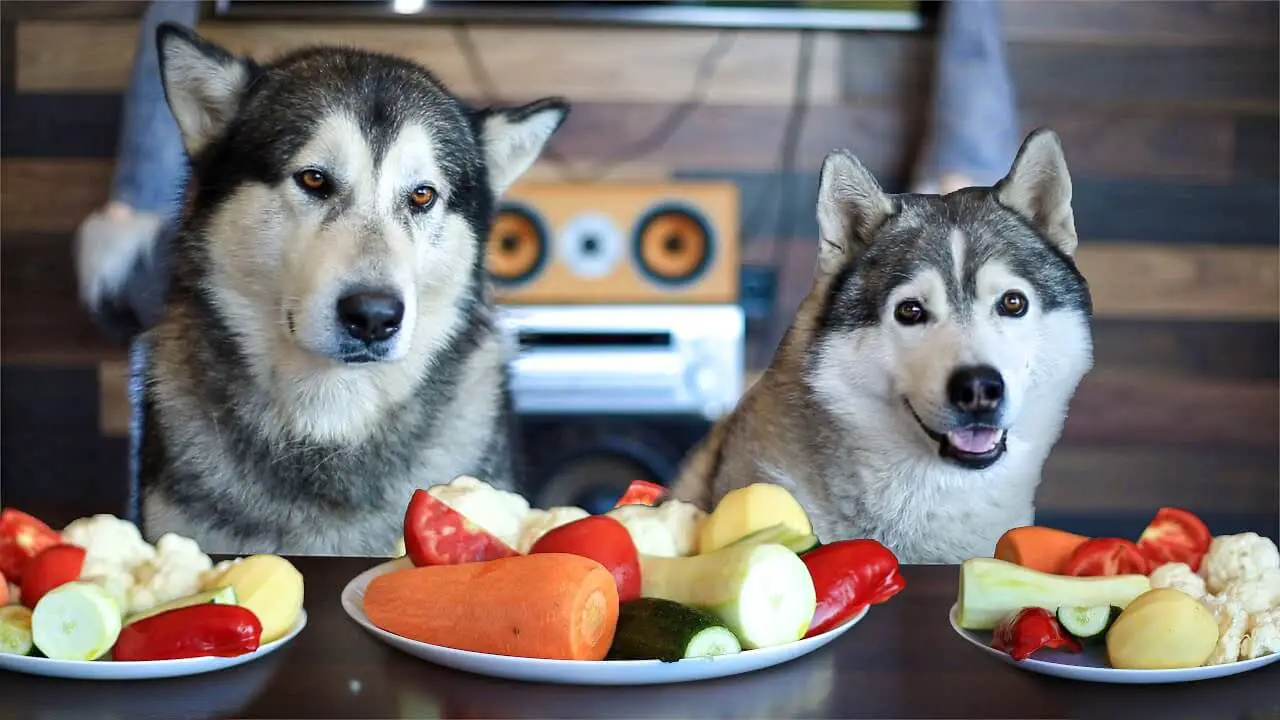Zucchini, asparagus, peppers, and cucumbers: healthy or toxic? When it comes to veggies for dogs, the answer is not entirely clear. Dogs are allowed to eat some vegetables, others can cause serious health damage, even in small quantities.
Vegetables for Dogs in Brief

- Vegetables are a welcome and healthy addition to meat for dogs.
- High-quality carbohydrates, minerals, and fiber as well as trace elements and vitamins promote the health of the animal.
- As a low-fat and low-calorie snack, it is preferable to any treat.
- Not all varieties are equally well tolerated by the dog’s stomach.
Vegetables for the Dog: What to Watch Out for When Feeding
Basically, it is advisable to include vegetables in the feeding. However, do not simply offer your four-legged friend the healthy bites whole. In contrast to us humans, the dog lacks a certain endogenous enzyme. This enzyme is responsible for breaking down the cell walls so that the organism gets to the important nutrients. For example, if the dog eats a whole crunchy carrot, his body will not absorb the vitamins. That’s not harmful – it still remains a low-fat snack.
Eat Raw or Cooked?
It is best to always feed your dog raw food as porridge. The cell walls are destroyed by pureeing. In this way, all nutrients can be absorbed by the animal’s body. Cooked porridge is more beneficial for sick dogs or those with digestive problems. Basically: Raw porridge is digestive, cooked vegetables have a more constipating effect.
Ripe Fruits and Fat
Also, make sure to always feed your dog ripe or overripe fruit. This is better processed by his short digestive tract. In addition, you should ideally always add a small amount of fat to the porridge. This is how the body also absorbs the fat-soluble vitamins A, D, E and K. Yogurt, a teaspoon of oil, or a raw egg are suitable.
It’s All in the Mix!
Your dog’s palate and metabolism will be happy about a menu that is as varied as possible. The more varied the vegetable diet, the more nutrients your cute fur nose receives. Suitable vegetable mixes for dogs are available from Pet Supplies. Organic products are particularly low in pollutants.
Safe Vegetables for Dogs
What can dogs safely eat? When it comes to vegetables, your four-legged friend will be happy to have a large selection!
- Chicory is rich in vitamin C and trace elements. Because it is bitter, many dogs ignore it.
- Chinese cabbage, on the other hand, would not push very few dogs from the edge of their plate. Protein, carbohydrates, minerals, amino acids – there is hardly anything that it does not have to show.
- Fennel offers many vitamins as well as folic acid. However, it contains oils that most dogs do not like.
- Carrots: Dietary fiber and minerals, as well as the fat-soluble beta-carotene, make yellow beets so healthy. They also taste delicious to the four-legged friends!
- Beetroot is a real nutritional miracle: In addition to various vitamins and minerals, it also has a very high folic acid content. It also has a digestive effect, but also stimulates the appetite!
- Caution should be exercised with naturally hungry breeds.
Asparagus has a diuretic effect but offers B vitamins and vitamin C.
Restricted Edible Vegetables
The following types of vegetables have a flatulence effect when raw. As raw food porridge, they are therefore unsuitable for dogs and should be cooked before consumption. At a glance:
- cauliflower;
- broccoli;
- kale;
- potatoes.
Potatoes do not cause gas, but should not be fed raw. They contain solanine and are poisonous to dogs in their raw state. Also, remove the green areas and the “eyes” before cooking. This is where the solanine is concentrated. If you want to feed the spinach, please remove the stems and skeleton from the leaves.
Paws Off These Vegetables!
The following vegetables should never end up in the bowl of your four-legged friend:
Nightshade Family
Tomatoes, aubergines, peppers, and peppers belong – like the potato – to the so-called nightshade family. They contain solanine, which is poisonous for dogs and should therefore never be fed. Only the potato can be fed after cooking.
Legumes
Beans, peas, lentils, or soy: Legumes contain phasin, which is toxic in the dog’s body. After a long cooking time of around 30 minutes, it will be destroyed, but then it still contains an almost indigestible ferment inhibitor. Overall, you are well-advised to remove peas, lentils, and the like from Bello’s menu.
Onions and Onion Plants
Onions and onion plants including all types of leek (including garlic!) Have no place in the bowl. Apart from the fact that they have a strong flatulence effect, larger quantities of them have a toxic effect on the dog’s organism.
Our Recommendation: Varied Food Makes Your Pet Happy and Healthy!
Would you like to do something good for your dog with vegetables more often in the future? Then you can use a few tricks to ensure that nothing wrong gets into the bowl:
- As a rule of thumb, the more raw the vegetables, the worse they will be tolerated by the dog. For example, green peppers are taboo, but red peppers are well tolerated.
- How to recognize poisoning in dogs: Sluggishness and a hard stomach are the first symptoms, followed by diarrhea and vomiting. Muscle tremors and cramps can also occur at this stage. Depending on the type of poisoning, blood in the stool, fever, and symptoms of paralysis may also occur. See a veterinarian at the first suspicion.

